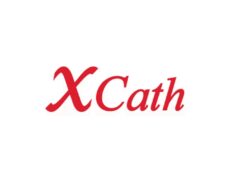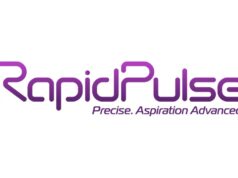Viz.ai has launched the next generation of its synchronized care platform for stroke. Viz.ai incorporates cutting edge artificial intelligence with HIPAA-compliant communication to allow stroke teams to quickly and efficiently triage patients to time-sensitive care with the aim of reducing time to treatment and increasing access to endovascular intervention.
New capabilities allow the stroke care team to synchronise care from stroke code notification to the post-acute care period. Expanded functionality will empower the stroke team with quick, relevant, clinical and imaging information to support faster diagnosis and treatment decisions.
“Artificial Intelligence has revolutionised acute stroke care,” said Johanna T Fifi, Associate Professor of Neurosurgery and Neurology, Icahn School of Medicine at Mount Sinai and Associate Director of the Cerebrovascular Center at the Mount Sinai Health System (New York, USA). “This platform has transformed our ability to treat cerebrovascular patients and is an integral part of our stroke workflow.”
These innovations include:
Enhanced Communication Capabilities
• Pre-hospital notification of Stroke Codes—aiding the stroke care team earlier in the workflow
• HIPAA-compliant messaging—Personal Health Information (PHI)—compatible inter- and intra-hospital messaging
• Group messaging, enabling users to group message by topic or person, providing improved communication for teams such as the interventional, vascular neurology and/or research team
• Customisable Alerts for CT, LVO, CTA, CTP (with adjustable TMax thresholds), which allows each user on the stroke team to control when they are notified
Expanded Image Viewing and Analysis
• Faster image viewing; images typically available in app in under 60 seconds
• Advanced Mobile PACs Imaging, involving dynamic, mobile image viewing of all relevant modalities including CT, CTA, CTP, MRI and MRA
• Advanced Automated CTP Maps to assists clinicians in making treatment decisions
• In-app Image Reconstruction: axial, sagittal and coronal reconstruction
• Automated MIPs to reduces the need for pre-processing
• 3D Image Rotation, allowing clinicians improved visibility to determine the presence of an occlusion
Enhanced Security
Viz is the only stroke software with SOC 2 Type 2 certification, typically required by hospital systems when processing medical data.
Electronic Health Records (EHR) system Integration
New interoperability with a range of EHR systems allowing automated capture of clinical and workflow metrics.
Viz Analytics
A robust business intelligence dashboard, to help neuroscience administrators with stroke service line planning and collection of Quality Improvement metrics to support the requirements for Joint Commission and DNV certification.
“In stroke, patient outcomes are determined by decisions that are made by clinicians in the first few minutes of care,” said Chris Mansi, neurosurgeon, CEO and Co-Founder of Viz.ai. “We are proud to offer hospital systems a comprehensive solution that can facilitate end-to-end care coordination and create efficiencies in acute stroke pathways to help get the right patient to the right doctor at the right time.”
Viz.ai utilises deep learning, where algorithms learn how to identify patterns in data from millions of prior examples for automatic detection of large vessel occlusions. The Viz.ai system connects to a hospital CT scanner and alerts the stroke specialist that a suspected large vessel occlusion (LVO) stroke has been identified, sending the radiological images directly to their smartphone. These prompt notifications allow stroke teams to quickly and efficiently triage patients to time-sensitive care.













